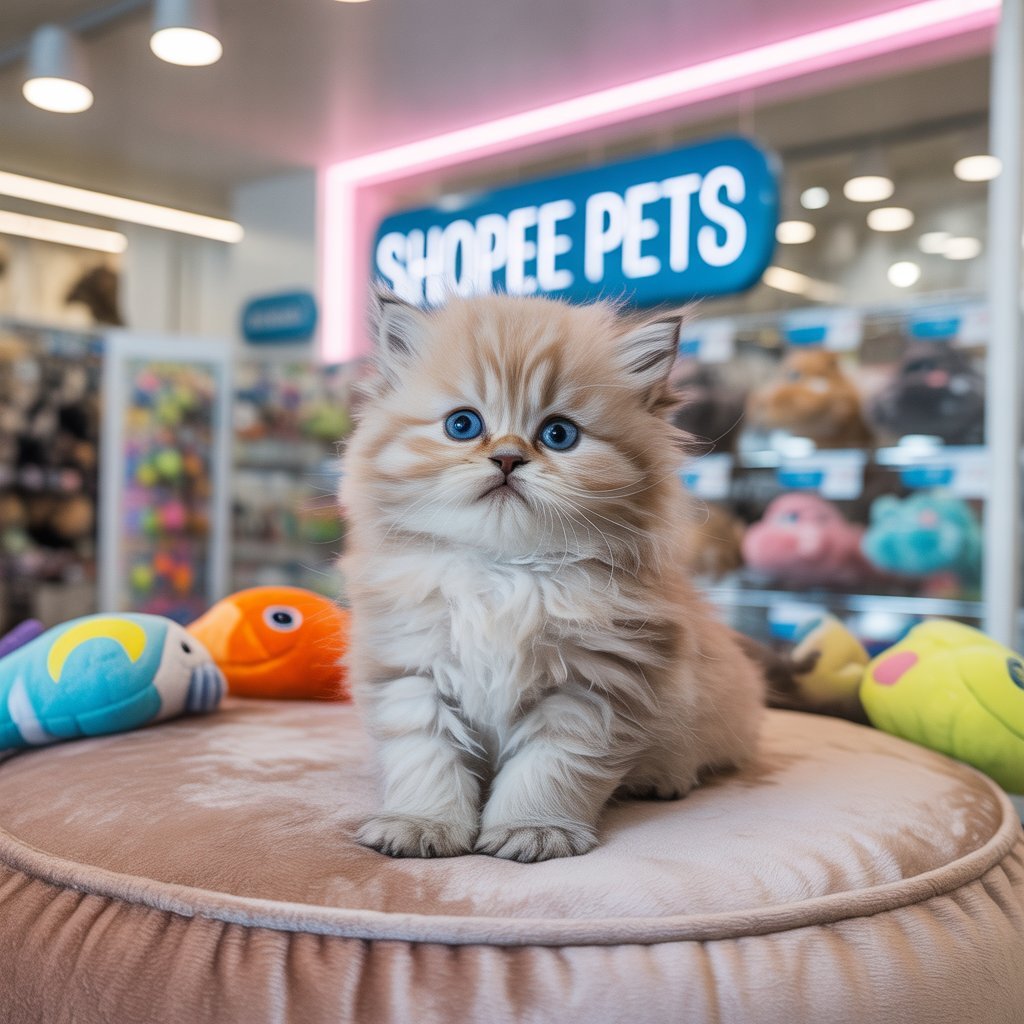Pet Sim is an acronym short for Pet Simulator, which may be described broadly as a group of games or electronic media by which users may choose and maintain a virtual pet. Such simulations incorporate features of strategy and role-playing to present to users that might otherwise have done the dirty work of real-life pet-ownership. By these games, players can feed, train, unlock abilities, or sometimes even trade or compete with others in an online environment.
The pet sim of course is an old idea-it dates back to the time when these early digital pets were born in the 1990s with Tamagotchis and computer-based pet-care games. Modern games have evolved even more strides, using high-tech graphics, AI interactions, and online multiplayer capabilities. Some of the best-known titles in this sub-genre today include Pet Simulator X on Roblox, Nintendogs, and My Talking Tom.
Features of Pet Sim Games
Features of pet sim present qualities common as engaging features in addicting games:
- Pet Customization– Players make as many choices as they wish on animals, breeds, or outright fantasy creatures to play with, accessorize, color, or give different traits to their liking.
- Care and Maintenance- usage and keeping pets clean, fed, and happy.
- Leveling and Training- Trying to develop an animal realizes that investing time, effort, or resources will truly make a difference in how strong, smart, or talented the pets will become.
- Trade and Economy- In fact, these are some types of simulations, especially taken on many such platforms, including Roblox; an in-game economy has been created where pets, items, and upgrades could be spent, bought, or traded for each other.
- Quests and Challenges- Players perform missions and objectives and gain rewards on which they develop.
Reasons Pet Sim Games Are Loved by All
Pet sim appeals to a person’s emotions. Real pets can be time-intensive, money-consuming, and perhaps effort-consuming as well, and not everyone can have that. Pet simulators really entertain and give a great alternative to the stress involved in real pets without denying the player every sense of companionship and responsibility.
Many pet sim games also encourage social interaction within gamers, and this refers to the engagement that players may have while trading and competing internationally. This community aspect adds a great deal of replay value, making sure players continue playing for months and even years.
The History and Evolution of Pet Sim Games
This history of pet sim games goes from very simple, very basic handheld toys, into fantastic worlds, with a million people playing them today. Knowing such a history gives us an insight into their continued popularity and adaptation into a new generation of gamers
Foundations: Digital Pets of the 1990s
The 1990s was a time for the birth of pet sim games with Tamagotchi and Digimon machines. They were more hand-held electronic toys that allowed users to hatch, feed, and provide for small digital creatures whenever they liked. These toys edge way backward owing to the relatively limited graphics and feature design, but they were a great revolution concerning that time.
- Tamagotchi(1996): One of the most well-known titles in pet sim history, especially since over 80 million units were sold worldwide.
- Digimon(1997): Basically like Pokémon, where users could train their pets to battle against one another, hence merging simulation with some competitive side.
They initiated the concept of a digital pet companion and laid the foundation for much more advanced virtual pet simulator games that would be developed later.
Growth to PC and Console Games
As technology improved, the pet sim experience migrated to personal computers and consoles. Games like:
- Dogz and Catz(1995-1999): Early computer-based pet simulators in which owners could adopt, feed, and interact with animals.
- Nintendogs(2005): One of the greatest milestones for the Nintendo DS was getting lifelike puppies into handheld gaming with touchscreen interaction and voice commands.
- Neopets(1999): This is an online browser-based pet simulation that combined pet care with a healthy virtual economy and is still greatly loved today.
These games broadened the scope of pet simulation games by involving better graphics, deeper gaming, and some online aspects.
The Growth of Online Pet Sims
Moving forward, the major switch that took place for browser-pet sims and multiplayer pet sims would be in the 2000s and 2010s. Club Penguin, Webkinz, and Moshi Monsters injected a newfound dimension: social interaction. Players could perform not only care activities with their pets but could also partake in online communities, play mini-games, and build worlds around their pets.
This era showcased that socially-oriented aspect of pet sims, still a defining feature of any pet simulation out there today.
Modern Pet Sim Games: Mobile & Roblox Era
Pet simulations have now become more accessible than ever before. Mobile venues and platforms like Roblox have allowed millions of players to easily jump onto the pet sim experience.
Among numerous pet-simulation games, this contemporary one allows players to hatch eggs, gather pets, forge trades with players, and finally climb the leaderboard.
- My Talking Tom and My Talking Angela: Mobile pet simulation that provides interactivity and casual gameplay to a global audience.
- Adopt Me!(Roblox): It mixes pet simulation with roleplaying and is one of the most played games on Roblox.
Pet sim games these days are more entertaining and addictive than ever, with improved graphics, exciting gameplay, fully developed in-game economies, and fans from every corner of the globe.
Core gameplay mechanics of pet sim games
Every pet sim game is based around the common core mechanics through which players are kept entertained and connected emotionally with their virtual pets. Each title offers its variations but most turn around similar gameplay systems incorporating some kind of simulation, progression, and community aspects.
1. Pet adoption and customization
In any pet sim, the basis would be pet choice. Players are usually allowed to select from a list of animals, breeds, or even mythical creatures. Some of the games take this much further with customizing options that can allow the player to:
- Select colors, fur patterns, or skins
- Equip accessories like hats, collars, or wings
- Choose personality traits that might have a say in pet behavior
This personalization further solidifies the bond of the player and the pet, making it feel very personal.
2. Feeding, caring, and happiness
Caregiving is at the very center of every pet-sim game; take it, like real pets, they need care for happiness and health. Players must:
- Feed them properly on balanced meals and treats
- Keep their pets clean through bathing or grooming
- Keep an eye on their happiness while interacting or playing.
Failure to do so would result in unhappy or less productive pets, thus deepening the challenge with responsibility.
3. Training and progression
Most pet sims have a progression system whereby pets become stronger or acquire new skills over time. These may include the following:
- Leveling Up: Pets gain experience points (XP) doing chores, battling, or going on quests daily.
- Skill Unlocks: At some point during their growth, pets earn access to special skills or tricks or powers.
- Evolutions or transformations: In some games, pets might get into stronger or rarer forms.
This system creates a very satisfying gameplay loop. The more you invest time, the more powerful and unique your pet will become.
4. In-game currency and trading
Many new pet sim games feature an in-game economy, especially when hosted on platforms such as Roblox. Players earn or purchase virtual currency which can be used to:
- Buy food, accessories, and upgrades
- Hatch rare eggs with unique pets
- Trade pets with other players in online marketplaces
This adds a social and competitive layer, as rare pets often bear much value in the community.
5. Quests, challenges, and events
To keep the gameplay fresh, the pet sim will have quests or seasonal events that encourage players to become active participants. Some will include:
- Collecting limited-edition pets during the holidays
- Completing everyday task for rewards
- Engaging in battles with pet, races, or mini-games
- Events cause excitement and urgency, which helps keep players active.
For some time now, pet sims have flourished and have amassed hundreds of games in their myriad forms of mobile, PC, and console games. As with every game, a unique twist is added to each, though some have stood the test of being counted as the most iconic and highly played.
1. Pet Simulator X (Roblox)
- Perhaps the most trendy modern pet simulator, Pet Simulator X gathers millions of active players on Roblox.
- Players hatch eggs and collect pets from cats and dogs to dragons and other mythical beings.
- The game offers a very sophisticated trading system whereby rare pets hold immense value in the community.
- Players stay constantly engaged because of regular updates, limited-time events, and special pets.
Fun Fact: At 1 million concurrent players at its peak, this is close to an impossible feat in the online simulator universe.
2. Adopt Me! (Roblox)
- Not entirely a pet sim, but Adopt Me! is a role-playing game mixed with pet ownership.
- Players can adopt an array of pets, from commonplace ones to the most legendary ones, nurture them and even trade them.
- Players can also role-play as families, build homes, and socialize with other players in the life-simulation online elements of Adopt Me!
- They are seen as status symbols in the community – think of rare pets such as neon or mega-neon pets.
3. Nintendogs (DS One)
- A highly respected game in the pet-sim category and a handheld-gaming change-maker in 2005.
- Players called out the names of their puppies through a microphone and instructed them using voice commands.
- Through the handheld device’s touch-screen operation, players could groom, pet, and play with their dogs in a very lifelike manner.
- It sold over 23 million copies worldwide, proving that the digital pet appeal is universal.
4. Neopets (Internet-Based)
- Neopets became one of the first online communities for pet-sim sites to exist under the duality of pet care-Virtually a whole world.
- The players adopted pets, battled them in the “Battledome,” and explored lands themed according to their tastes.
- It also thrusted into the public consciousness an economy run by Neopoints, establishing the early backbone of a digital trading system.
- At its height in the 2000s, it had over 25 million active users.
5. My Talking Tom and My Talking Angela (Mobile)
- Very popular among normal casual gamers, these mobile pet sims are engaging.
- Players feed, dress, and amuse Tom or Angela.
- The pets react to touch and mimic voices, generating amusing interactions.
- With billions of downloads, these apps validate that pet sims attract the sentiments of persons of all age groups and target more than just children.
Pet Simulation Games: Future Trends and Innovations
Technological advances will always march on, and with them, perhaps most especially, the pet sim genre has had a future up to now, peeling off new, important innovations from the eternal elements of virtual pet care. Insights into the future of pet sim games will well up into wave after wave of thrilling new developments.
1. Virtual and Augmented Reality
Generally speaking, everyone is looking forward to a stronger presence of such immersive technologies in pet sim gaming.
- By virtual reality: You wear virtual reality goggles and you have an environment presented within which you can play catch with your computer dog. With VR, its use allows the games to use more natural ways for players to interact within the environment, and therefore facilitate a stronger emotional bond.
- Augmented Reality: While proving that AR is indeed popular, there will probably be pet simulation games in the future giving the player a chance to see his virtual pet walk around his living room or in his backyard using a smartphone or AR glasses.
2. AI for Enhanced Pet Intelligence
Current pets in pet simulation games tend to have scripted behaviors, but in the course of development, there seems to be a general thrust for them towards more dynamic and realistic behaviors in the future.
- For instance, such pets would learn from a player’s habits–identifying voice, preferred play style, and more importantly, emotional state.
- Unique traits will characterize the animals with their AI-driven personalities so that no couple of pets ever feel the same.
- Over time, virtual pets may even come to be regarded as true digital companions rather than mere characters within a game.
3. Pets On Blockchain and NFTs
- Nebulous, but on the rise, blockchain is penetrating the space of pets simulations.
- Ad and sell real-world value in pets, even trade them.
- Ownership is guaranteed on the blockchain, which would give players a feeling of possession over the pet in terms of exclusivity and rarity.
- Surely, such a model could attract millions of players as seen in Axie Infinity, although questions about sustainability linger.
4. Cross-Platform Adoption
- Future pet sims would perhaps move towards real-time cross-playing functionality.
- Playing with your virtual friend will also cross between mobile, PC, and console to even VR without losing even a single bit of progress.
- This would definitely make pet care simpler and accessible through cloud saves and shared accounts.
- No matter the device they use, players will be able to keep joined in the game.
5. More Robust Social and Community Features
- Community has always been the backbone of pet sim games, and the trends point to an even greater level of social integration in the future.
- Multiplayer points where players can meet up with their pets in an immersive shared environment.
- Global events where communities work together to unlock rare creatures or rewards.
- Competitive aspects such as pet competitions, fashion shows, or obstacle courses.
6. Uses of Educational and Therapeutic Nature
Even still, pet sims can be found to be of practical applications beyond entertainment.
- Education: Teaching children responsibility, empathy, and even basic economics in trading in-game commodities.
- Therapy: Virtual pets are being used for stress reduction, as company to the elderly, and even for providing mental health support.
- Gamified Learning: There will be a few examples of pet simulation titles that use biology or environmental science and teach players about animal care and ecosystems in future.
Conclusion: Why Pet Sims Will Continue to Last
Pet simulation games showcase the unique charm of virtual companionship. From the cuteness of 1990s Tamagotchis to the Pet Simulator X and Adopt Me! ecosystems of today, these games have evolved to fulfill expectations and need of players. This kind of game had such strong emotional involvement, progression sense, and social contact experience, resulting in it being one of the most enduring genres in gaming.
Pet simulation games appeal to the entire world with age, culture, and platform.




